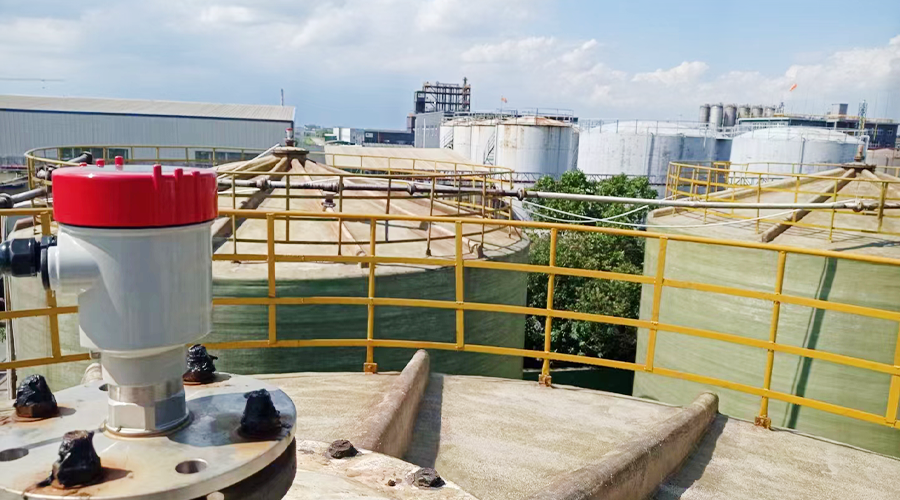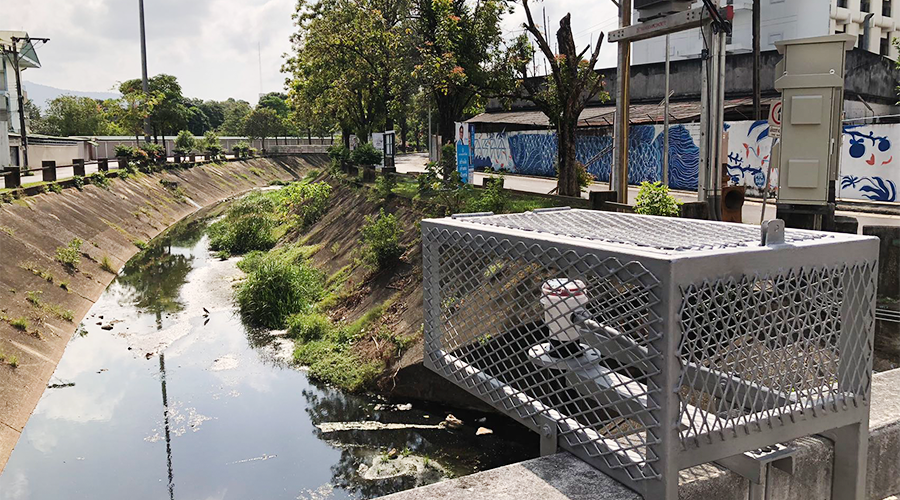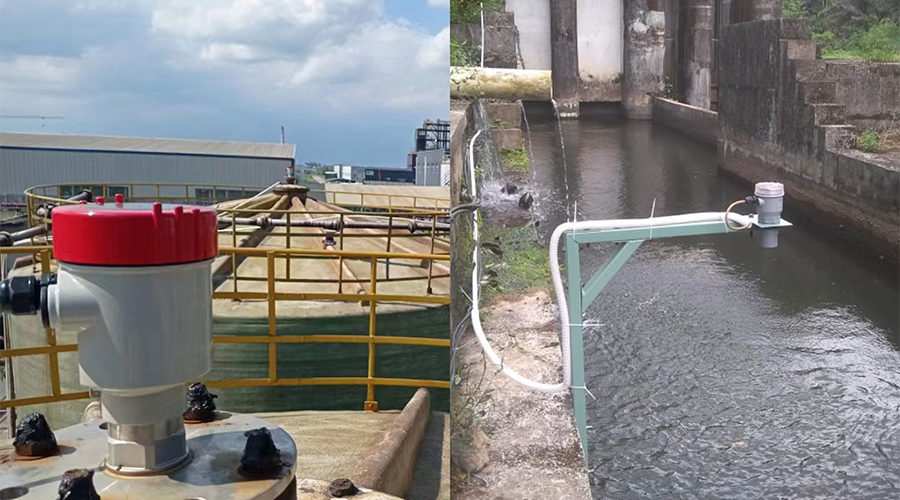What device shows the water level in tank?
A device that shows the water level in a tank is called a water level sensor or a water level gauge. These devices come in different types and designs, but the most common ones include:
Float-type water level sensors: These sensors consist of a float that is attached to a lever arm, which is in turn connected to a switch or indicator. As the water level in the tank rises or falls, the float moves up or down, activating the switch or indicator to show the water level.
Ultrasonic water level sensors: These sensors use ultrasonic waves to measure the distance between the sensor and the water surface. The sensor emits ultrasonic waves, which bounce off the water surface and return to the sensor, providing a measurement of the water level.
Capacitive water level sensors: These sensors work by measuring changes in capacitance caused by the presence of water. The sensor consists of two metal plates, and as the water level in the tank rises, the capacitance between the plates changes, providing a measurement of the water level.
Pressure water level sensors: These sensors use a pressure transducer to measure the pressure of the water at the bottom of the tank. The pressure reading is then converted to a water level measurement.
Water level sensors are important devices for monitoring and controlling water levels in tanks, wells, reservoirs, and other water storage systems. They provide accurate and reliable measurements of water levels, helping to prevent overflows, underflows, and other potential problems.
What is a water tank level indicator?
A water tank level indicator is a device that is used to measure and display the water level in a water storage tank. These indicators are commonly used in domestic, commercial, and industrial settings where it is necessary to monitor water levels for various purposes such as ensuring adequate water supply, preventing overflow, and managing water consumption.
Water tank level indicators come in various forms, but the most common types include:
Mechanical level indicators: These indicators use a float that is connected to a gauge mounted on the outside of the tank. As the water level in the tank rises or falls, the float moves up or down, indicating the water level on the gauge.
Digital level indicators: These indicators use sensors that are placed inside the tank to measure the water level. The sensors send signals to a digital display unit, which shows the water level in real-time.
Wireless level indicators: These indicators use wireless sensors that are placed inside the tank to measure the water level. The sensors transmit data to a wireless receiver, which displays the water level on a digital display unit.
Water tank level indicators are essential tools for ensuring the proper functioning of water storage systems. They help to prevent overflow, underflow, and other potential problems, and they provide accurate and reliable measurements of water levels, enabling users to manage water consumption effectively. Overall, water tank level indicators are an important component of any water storage system, and they are widely used in residential, commercial, and industrial applications.
How do tank level indicators work?
The working principle of a tank level indicator depends on the type of indicator being used. However, the basic principle of all tank level indicators is to measure the level of liquid in a tank and display it in a way that is easy to read and understand.
Here are the working principles of three common types of tank level indicators:
Mechanical level indicators: These indicators use a float that is connected to a gauge mounted on the outside of the tank. As the liquid level in the tank rises or falls, the float moves up or down, and the gauge indicates the level of the liquid.
Digital level indicators: These indicators use sensors that are placed inside the tank to measure the liquid level. The sensors can use various technologies such as ultrasonic, radar, or pressure sensors. The sensors send signals to a digital display unit, which shows the liquid level in real-time.
Wireless level indicators: These indicators use wireless sensors that are placed inside the tank to measure the liquid level. The sensors transmit data to a wireless receiver, which displays the liquid level on a digital display unit. The receiver can be located some distance away from the tank, allowing users to monitor the liquid level remotely.
In all types of tank level indicators, the key is accurate and reliable measurement of the liquid level. The indicator must be calibrated to the specific tank and the liquid being measured, and the measurement must be consistent and repeatable. Tank level indicators are important tools for managing and monitoring liquid levels in a variety of applications, including water storage, fuel storage, and chemical storage.
How do I monitor my water tank level?
There are several ways to monitor the water level in a water tank:
Use a tank level indicator: Tank level indicators are devices that measure and display the water level in a water tank. There are different types of tank level indicators available, such as mechanical, digital, or wireless, that can help you monitor the water level in real-time.
Use a float switch: A float switch is a device that detects the water level in a tank and triggers a switch to turn a pump on or off. By installing a float switch at the appropriate level in your water tank, you can monitor the water level and control your pump automatically.
Use a pressure gauge: A pressure gauge can be installed at the bottom of your water tank to monitor the water pressure. By monitoring the pressure, you can estimate the water level in the tank, since the pressure decreases as the water level drops.
Use a water meter: A water meter can be installed at the inlet or outlet of your water tank to measure the volume of water that enters or leaves the tank. By monitoring the volume, you can estimate the water level in the tank, since the volume decreases as the water level drops.
Visual inspection: Finally, you can also monitor the water level in your water tank by performing a visual inspection. You can check the water level by opening the tank lid and looking inside, or by using a dipstick or ruler to measure the depth of the water in the tank.
There are various ways to monitor the water level in a water tank, and the method you choose will depend on your specific needs and preferences.
Water tank radar level indicators VS. Ultrasonic level indicators
Water tank level indicators come in various types, including radar and ultrasonic level indicators. Here are some key differences between these two types of indicators:
Technology: Radar level indicators use radar waves to measure the level of liquid in a tank, while ultrasonic level indicators use ultrasonic waves. The radar waves are less affected by environmental conditions such as temperature, humidity, and dust, making them more accurate in harsh conditions.
Range: Radar level indicators have a longer range compared to ultrasonic level indicators, which means they can measure the level of liquid in a larger tank from a greater distance.
Installation: Ultrasonic level indicators are easier to install than radar level indicators since they do not require any calibration or tuning. Radar level indicators need to be calibrated to the specific tank and liquid being measured, which requires more expertise and time.
Cost: Ultrasonic level indicators are generally less expensive than radar level indicators.
Maintenance: Radar level indicators require more maintenance than ultrasonic level indicators. They need periodic calibration and tuning, and the antenna needs to be kept clean and free from debris.’
Both radar and ultrasonic level indicators have their advantages and disadvantages, and the choice between them depends on various factors such as the size of the tank, the environmental conditions, and the user’s budget and expertise. Contact us for free technical support about how to choose water tank level indicators.
Why do we use water tank radar level indicators?
Water tank radar level indicators are commonly used in various industries and applications for several reasons, including:
Accuracy: Radar level indicators provide accurate and reliable measurements of the liquid level in a tank. They are less affected by environmental conditions such as temperature, humidity, and dust, which can affect the accuracy of other types of level indicators.
Non-contact measurement: Radar level indicators can measure the liquid level without coming into contact with the liquid, which can be beneficial in certain applications. For example, in the chemical industry, contact with certain liquids can be hazardous or cause contamination.
Long-range measurement: Radar level indicators can measure the liquid level in a tank from a greater distance than other types of level indicators, making them suitable for large tanks or tanks that are difficult to access.
Wide range of applications: Radar level indicators can be used in a variety of applications, including water storage, fuel storage, chemical processing, and more.
Real-time monitoring: Radar level indicators can provide real-time monitoring of the liquid level in a tank, allowing users to take action if the level is too high or too low.
Overall, water tank radar level indicators are an effective and reliable tool for measuring and monitoring the liquid level in a tank, and they are widely used in various industries and applications.
The benefits of water tank radar level indicators
Water tank radar level indicators have several benefits, including:
Accurate measurements: Radar level indicators provide highly accurate measurements of the liquid level in a tank, regardless of the type of liquid or the conditions in the tank. This ensures that users can rely on the readings provided by the radar level indicator for safe and efficient operation.
Non-contact measurement: Unlike other types of level indicators that require contact with the liquid in the tank, radar level indicators can measure the liquid level without touching the liquid. This is particularly useful in situations where the liquid is hazardous or corrosive.
Long-range measurement: Radar level indicators can measure the level of liquid in a tank from a long distance, which makes them ideal for large tanks or tanks that are difficult to access.
Real-time monitoring: Radar level indicators provide real-time monitoring of the liquid level in a tank, which allows users to take action immediately if there are any issues. This can help prevent accidents, spills, or other problems that can result in costly downtime.
Easy installation: Radar level indicators are relatively easy to install and can be customized to fit the specific needs of the user. They require minimal maintenance and can be used in a wide range of industries and applications.
Overall, water tank radar level indicators are a reliable and effective tool for measuring and monitoring the liquid level in a tank. They provide accurate readings, are easy to install and maintain, and can be used in a variety of industries and applications.
Post time: Mar-27-2023



